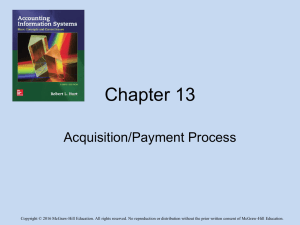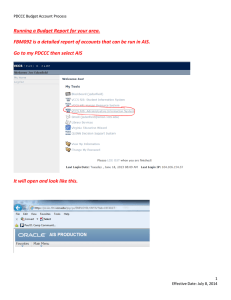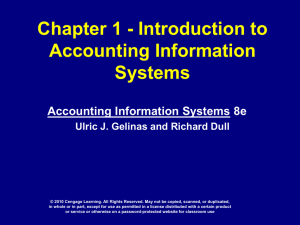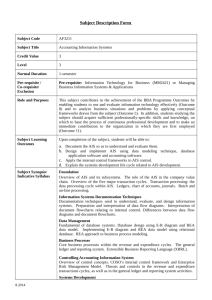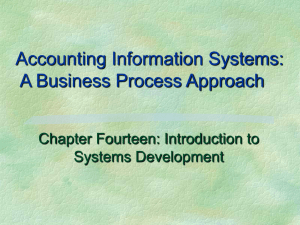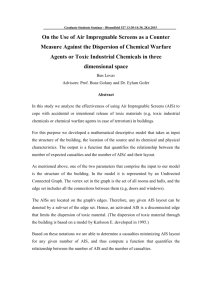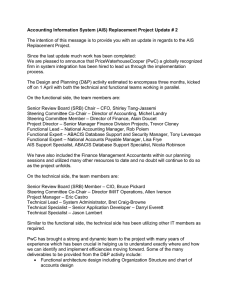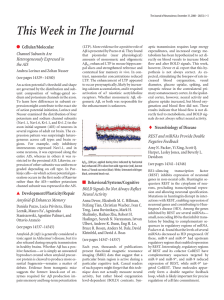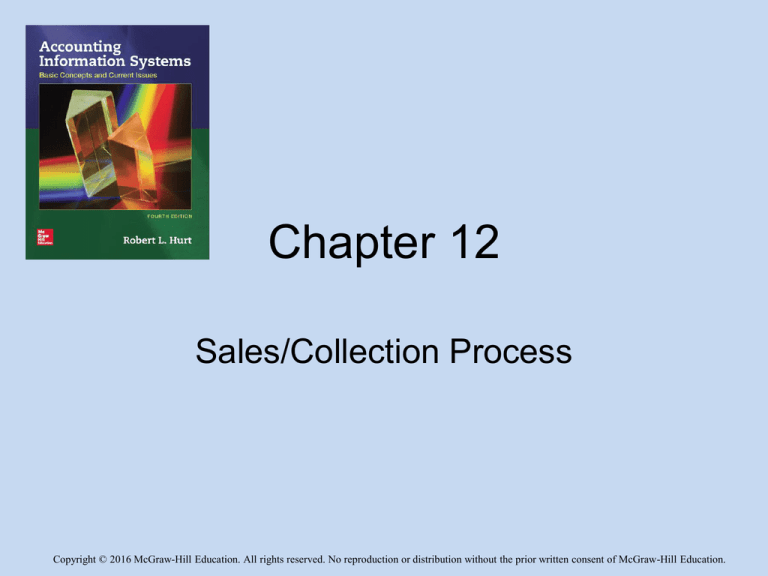
Chapter 12
Sales/Collection Process
Copyright © 2016 McGraw-Hill Education. All rights reserved. No reproduction or distribution without the prior written consent of McGraw-Hill Education.
Outline
• Learning objectives
• Value chain
• Process steps
• AIS elements
12-2
Learning
objectives
With respect to
the sales /
collection
process, you
should be able to:
1. Explain its role and purpose.
2. List and discuss, in order, the
steps in the process.
3. Explain how the generic
structure of most AIS applies
to the process.
4. Process common
transactions.
5. Design & critique internal
controls based on common
risk exposures.
6. Develop & interpret processrelated systems
documentation.
7. Relate Porter’s value chain to
the process.
12-3
Value chain
• Organizations exist to create value for
their stakeholders.
• Porter’s value chain is a classic, well
recognized model for describing generic
value creating activities.
• It comprises two main parts:
– Primary activities
– Support activities
12-4
Value chain
• Primary activities create value directly.
– Inbound logistics
– Operations
– Outbound logistics
– Marketing and sales
– Service
12-5
Value chain
• Support activities create value
indirectly.
– Procurement
– Information technology
– Human resource management
– Infrastructure
12-6
Process steps
• Overall, the sales /
• Details may vary across
collection process
organizations, but the
comprises everything
sales / collection
from taking a
process generally
customer’s order
comprises seven
through collecting
generic steps.
payment from the
customer.
12-7
Process steps
1. Take the customer’s
order.
2. Approve the
customer’s credit.
3. Fill the order based on
approved credit.
4. Ship the product.
5. Bill the customer.
6. Collect payment.
7. Process uncollectible
receivables as
needed.
12-8
AIS
elements
• Inputs
Recall from your study in
Chapter 1 that most
• Processes
accounting information
systems comprise five
• Outputs
generic elements. The
next series of slides will
• Storage
show how those
elements are applied in
• Internal controls
the context of the sales /
collection process.
12-9
AIS
elements
Input and output
• Customer order
• Picking list
• Packing list
documents
associated with the
• Bill of lading
sales / collection
• Customer invoice
process include
those listed on the
right.
• Customer check
• Remittance advice
• Deposit slip
12-10
AIS elements
• Processes
– Seven generic steps
– Accounting cycle steps, including the
following journal entries:
•
•
•
•
Sale on credit / for cash
Payment of outgoing freight charges
Cash collections
Bad debt write-offs as needed
12-11
AIS
elements
Storage
• Three broad file
types
• Master files
• Transaction files
• Junction files
• Examples for the
sales / collection
process are listed
on the right.
• Master files
– Customer
– Inventory
– Employee
– Cash
• Transaction files
– Sales
– Cash receipts
• Junction files
– Sales / inventory
– Sales / cash receipts
12-12
AIS elements
• Internal controls
– Segregation of duties
– Adequate
documentation
– Daily cash deposits
– Serially-numbered
documents
– Document matching
– Insurance
– Information technology
– Proper inventory
storage
– And a host of others!
– Employee training
12-13
12-14

